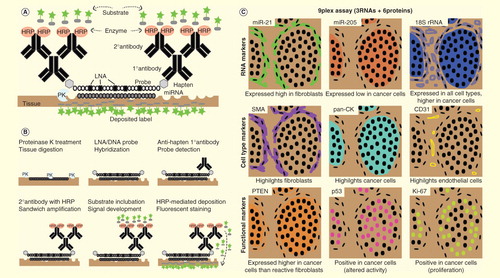Figures & data
Table 1. Variations and evolution of tissue slide-based assays for in situ detection of miRNAs†.
Table 2. Potential clinical applications of miRNA-based in situ hybridization assays†.

